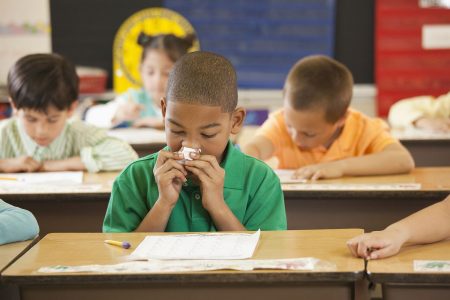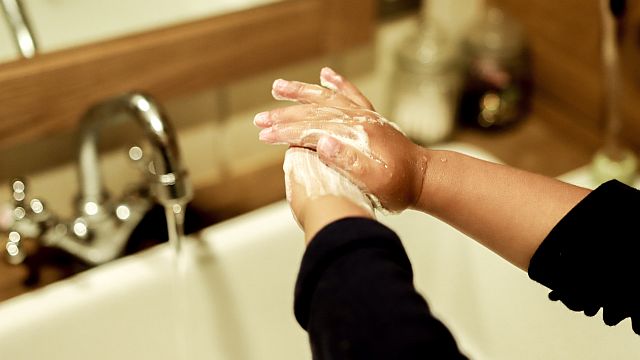
By Alicia Rohan
UAB News

School classrooms are a breeding ground for bacteria and germs. Teaching children about the flu and other contagious diseases starts at home but should continue at school as well.
“Children are very observant and hear about the flu in conversation, on the radio and on the television,” said Jennifer Ponder, Ph.D., chair of the University of Alabama at Birmingham School of Education Department of Curriculum and Instruction. “It is important that caretakers and educators continue those conversations to create healthy hygiene habits in children. In order to succeed in the classroom, a child needs to be healthy and present, so starting good hygiene early on will increase their chances of success.”
Ponder suggests that educators create a classroom environment where children are in charge of taking care of their space. This includes teaching cleanliness and strategies to disinfect spaces and protect germs from spreading, such as using a disinfecting wipe to clean all desks and surfaces on a daily basis.
“There are resources for educators to help teach kids about proper hygiene,” Ponder said. “Finding ways to incorporate hygiene and the flu into your lesson plan makes learning fun and will resonate with younger children more.”
The Centers for Disease Control and Prevention has a resource for educators to incorporate hygiene and the flu into their curriculum, “Teaching Children About the Flu.” Activities include:
- Sing “If You Are Happy and You Know It, Scrub Your Hands” while washing your hands to ensure that students wash for the appropriate amount of time.
- Model how to wash your hands with the appropriate amount of soap.
- Cough or sneeze in their elbow/sleeve if tissues are not available.
- Simulate how germs spread by using a drop of unscented lotion and a pinch of glitter. Make a fist with glitter in it, then open the hand to show how glitter spreads. The teacher touches another child’s hand to show how the glitter spreads easily. Use a paper towel to wipe off the glitter. The glitter is hard to get off, showing how easily germs spread from person to person.
Parents can do their part to help keep germs out of the classroom. Ponder suggests parents send hand sanitizer, paper towels, tissues and disinfectants to help keep the classroom clean. When a child is running a fever, coughing or sneezing excessively, lethargic, or showing other symptoms of the flu, keep them home. If symptoms persist, call your pediatrician.
“Parents should be talking to children about the flu and flu symptoms,” Ponder said. “Reiterate what they are hearing at school, on TV and from their friends. Use these opportunities to talk about germs, proper handwashing and keeping your home clean.”



